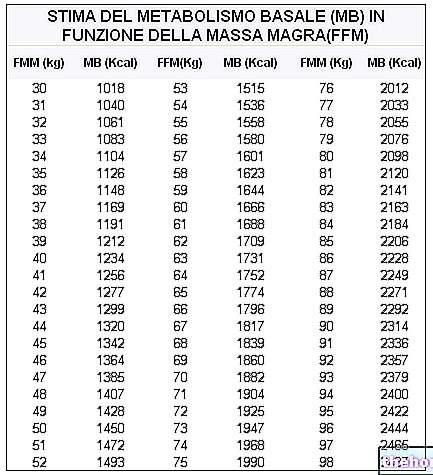Generality
Premise
Fatty acids are chemical compounds consisting of a straight hydrocarbon chain having a carboxylic group at one end.
These nutrients differ according to the number of carbon atoms in the chain and according to the type, number and location of the chemical bonds that bind the carbon atoms.

Medium Chain Fatty Acids
They are defined as medium-chain triglycerides or MCTs (from the English Medium Chain Triglycerides), saturated fatty acids with 6-12 carbon atoms (they are saturated if the C-C bonds are all simple or σ type).
Medium-chain fatty acids, such as caprylic, caprinic and lauric acid, boast peculiar dietary characteristics.
Unlike long-chain saturated fatty acids (with 14-20 or more carbon atoms), MCTs are poured directly into the portal circulation, without first passing through the lymphatic pathway.
The triglycerides that contain them also boast better water solubility than their long-chain counterparts and are therefore more easily attacked by gastrointestinal lipases (therefore, they do not need the adjuvant action of bile to be digested).
Just as quickly they are subsequently subjected to B-oxidation, that is the metabolic pathway that leads to the production of energy starting from fats.
Unlike long-chain ones, MCTs do not have to bind to carnitine, but freely enter the mitochondrion (where the B-oxidation initiated in the cytoplasm is completed).
The rapidity with which medium-chain fatty acids cross the mitochondrial double membrane causes considerable quantities of acetyl-coA to be formed, which is why they are considered strongly ketogenic (the synthesis of ketone bodies is obviously increased in conditions of carbohydrate deficiency) .
The aforementioned biochemical characteristics obviously influence its clinical properties and related applications.
Medium Chain Fatty Acids in Foods
Triglycerides with medium-chain fatty acids are mainly contained in milk and coconut oil. It is precisely from the distillation of this food that most of the medium-chain fatty acids used in sports and therapy are obtained. other tropical oils such as palm oil can therefore be considered a food with a better nutritional profile.
Indications
Why are medium-chain triglycerides used? What are they for?
Medium-chain triglycerides have a predominantly energetic function and thus represent an alternative and / or complementary metabolic pathway to the intake of sugars and starches, allowing a saving of glycogen, but also of amino acids in the muscles.
Furthermore, compared to carbohydrates, medium-chain fatty acids provide a much higher energy intake (8.3 kcal per gram).
All these characteristics mean that MCTs are used in entral or parenteral nutrition in critical, terminal diseases or in conditions of rapid wasting (such as chronic pancreatic insufficiency).
Equally important is the use of medium-chain fatty acids in sports as a supplementary energy source, despite the fact that the literature is still very skeptical about its real effectiveness.
On the other hand, the effects on immunity and cancer would be interesting, which would seem to enlist medium-chain triglycerides as elements endowed with defensive activity.
Benefits and Properties
What benefits have medium-chain triglycerides shown during the studies?
There are numerous studies relating to the clinical efficacy of medium-chain triglycerides.
More precisely, a "careful examination of the literature shows the usefulness of these nutrients in:
- Counteracting oncological cachexia, ensuring a saving of glycogen and muscle proteins and counteracting excessive weight loss;
- Support the immune defenses, in particular phagocytic activity, in the course of experimental infections on rodents;
- To improve the clinical management, together with an adequate diet, of drug-resistant epilepsies, extending the time to remission and reducing the intensity and frequency of acute episodes;
- Improve the clinical and nutritional conditions of patients suffering from chronic lung, pancreatic and liver diseases;
- Improve the nutritional profile of patients with intestinal malabsorption.
The studies relating to the efficacy of medium-chain triglycerides in sports and in improving body composition would be less relevant and decidedly more discordant.
Some studies have shown that MCTs can help in promoting the consumption of excess calories, the metabolization of fats and the reduction of appetite, promoting weight loss. However, this is weak evidence, denied by other studies.
Dosage and method of use
How to use medium chain triglycerides
The use of medium chain triglycerides, generally justified by clinical causes, should be supervised by medical personnel, who will define the dose suitable for the patient's needs.
It is not possible to define an adequate dosage a priori, while it is known that the consumption of doses higher than 80g per day is certainly associated with the onset of unpleasant side effects.
Side effects
The use of medium-chain triglycerides, especially in high doses, could lead to the onset of gastro-enteric disorders, such as nausea, diarrhea, vomiting, intestinal cramps and irritability.
Contraindications
When should medium-chain triglycerides not be used?
The use of medium chain triglycerides is contraindicated in case of hepatic encephalopathy and hypersensitivity to the active ingredient.
Pharmacological interactions
What drugs or foods can modify the effect of medium chain triglycerides?
The simultaneous intake of medium-chain triglycerides could facilitate the intestinal absorption of fat-soluble drugs, fat-soluble vitamins, carotenoids, lipophilic polyphenols, essential fatty acids, magnesium, calcium and lipophilic phytotherapeutic elements.
Precautions for use
What do you need to know before taking medium-chain triglycerides?
The use of medium-chain triglycerides should be done with particular caution, and under close medical supervision, in patients with diabetes, acidosis, ketosis, cirrhosis or congenital disorders of metabolism.




























